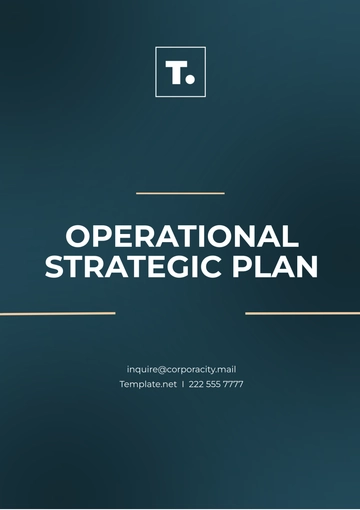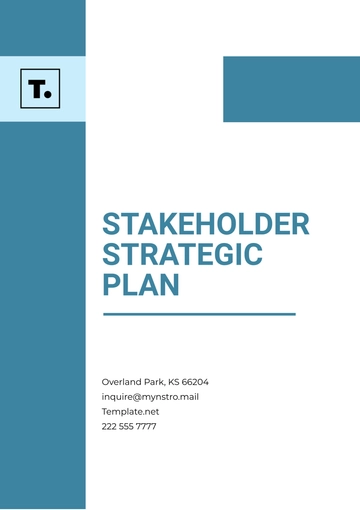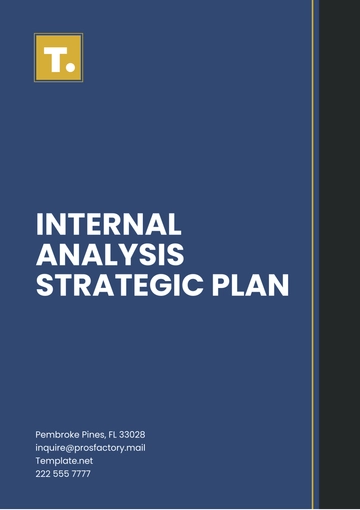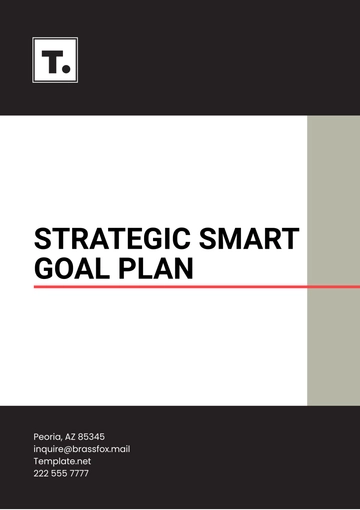Free Strategic PPE Planning

I. Executive Summary
A. Brief Overview
Welcome to the Strategic PPE Planning document for [Your Company Name]. This plan outlines our comprehensive approach to personal protective equipment to ensure the safety and well-being of our employees across all departments and job roles.
B. Purpose of the Strategic PPE Plan
The primary purpose of this plan is to establish a systematic and proactive strategy for the selection, procurement, use, and maintenance of personal protective equipment in alignment with occupational safety and health regulations.
C. Key Objectives and Goals
Ensure the highest level of safety for all employees.
Achieve and maintain compliance with relevant safety regulations.
Minimize the risk of workplace incidents through effective PPE management.
Foster a safety culture that prioritizes the well-being of our workforce.
II. Introduction
A. Background
[Your Company Name] is committed to providing a safe and healthy work environment for all employees. This Strategic PPE Plan is a critical component of our overall safety program, addressing the potential hazards associated with our diverse operations.
B. Regulatory Context
This plan adheres to and exceeds the requirements set forth by the Occupational Safety and Health Administration (OSHA) and other relevant regulatory bodies.
III. Risk Assessment
A. Hazard Identification
Types of Hazards in the Workplace
a. Chemical exposures
b. Mechanical hazards
c. Biological agents
d. Electrical hazards
Specific Job Tasks and Processes
a. Welding operations
b. Chemical handling
c. Machine operation
d. Laboratory work
B. Risk Analysis
Likelihood and Severity Assessment
High-risk tasks identified: Welding (likelihood: high, severity: moderate)
Moderate-risk tasks identified: Chemical handling (likelihood: moderate, severity: high)
Prioritization of Hazards
Focus on high-risk tasks for immediate intervention and PPE implementation.
IV. PPE Selection
A. Types of PPE
Head Protection
a. Hard hats with impact and penetration resistance.
Eye and Face Protection
a. Safety glasses for general tasks.
b. Face shields for welding operations.
Respiratory Protection
a. N95 respirators for chemical handling.
b. Supplied air respirators for welding operations.
Hand Protection
a. Chemical-resistant gloves for chemical handling.
b. Welding gloves for welding operations.
Foot Protection
a. Steel-toed boots with slip-resistant soles.
Body Protection
a. Chemical-resistant coveralls for chemical handling.
b. Flame-resistant clothing for welding operations.
B. PPE Selection Criteria
Compatibility with Hazards
a. PPE is selected based on specific hazards identified
Comfort and Fit
a. Employee input is considered to ensure comfort and compliance.
Durability
a. High-quality materials selected for longevity.
C. Special Considerations
Medical Surveillance for Respiratory Protection
a. Regular health assessments for employees using respiratory protection.
Hearing Protection
a. Earplugs are provided for tasks with high noise levels.
b. Audiometric testing for employees exposed to excessive noise.
V. Procurement and Inventory Management
A. Supplier Selection and Evaluation
Established relationships with reputable PPE suppliers.
Regular evaluation of supplier performance.
B. Procurement Process
Budgeting and Cost Considerations
a. Annual budget allocated for PPE procurement.
b. Cost-effective sourcing without compromising quality.
Contract Negotiation
a. Negotiated contracts with suppliers for favorable terms.
C. Inventory Control
Stock Levels
a. Maintaining adequate stock for immediate needs.
b. Continuous monitoring of inventory levels.
Tracking and Monitoring Systems
a. Computerized tracking system for efficient management.
VI. Training and Education
A. Training Programs
General PPE Awareness
a. Annual training sessions for all employees.
b. New employee orientation.
Task-Specific Training
a. Specialized training for employees in high-risk tasks.
B. Training Methods
Classroom Training
a. Interactive sessions on PPE usage and importance.
Hands-on Demonstrations
b. Practical demonstrations for correct PPE donning and doffing.
C. Communication Strategies
Signs and Labels
a. Marked areas indicating PPE requirements.
Written Materials
a. PPE manuals were distributed to all employees.
VII. Emergency Preparedness
A. Emergency Response Plans
PPE Use During Emergencies
a. Emergency kits are equipped with appropriate PPE.
Evacuation Procedures
a. Clear evacuation routes and assembly points.
B. Drills and Simulations
PPE Drills
a. Regular drills to ensure rapid and correct PPE use.
Post-Drill Evaluation and Improvement
a. Continuous improvement based on drill feedback.
VIII. Inspection and Maintenance
A. Regular Inspection Procedures
Daily Checks
a. Employee self-checks for visible damage.
b. Monthly formal inspections by designated personnel.
Periodic Inspections
a. Professional inspections by third-party experts.
B. Maintenance and Repair
In-house Maintenance Protocols
a. Simple repairs are performed in-house.
b. Timely replacement of damaged PPE.
Outsourced Services
a. Contracted services for specialized equipment maintenance.
IX. Record-Keeping and Documentation
A. Incident Reporting
Near Misses
a. Anonymous reporting system for near misses.
Accidents and Injuries
a. Comprehensive incident reports with PPE details.
B. Usage Records
Tracking PPE Utilization
a. Usage records integrated with inventory management.
Replacement and Disposal Records
a. Log of replaced and disposed-of PPE items.
X. Continuous Improvement
A. Performance Metrics
Establish key performance indicators (KPIs) to measure the effectiveness of our PPE program.
Regularly analyze and review performance metrics to identify trends, areas for improvement, and successes.
B. Regular Review and Updating
Conduct an annual comprehensive review of the Strategic PPE Plan to ensure its continued relevance and effectiveness.
Assess changes in organizational structure, work processes, and regulations that may impact PPE requirements.
Engage relevant stakeholders in the review process to gather insights and feedback for continuous enhancement.
C. Incorporating Feedback
Establish a formal mechanism for collecting feedback from employees regarding PPE effectiveness and comfort.
Regularly review feedback and use it to make informed adjustments to the PPE program.
Encourage open communication and a culture of continuous improvement regarding safety.
D. Adapting to Technological Advances
Stay abreast of advancements in PPE technologies and materials.
Evaluate and, where applicable, adopt new technologies that enhance the performance, comfort, and safety features of PPE.
Collaborate with industry experts and suppliers to leverage cutting-edge solutions.
XI. Conclusion
The Strategic PPE Planning document stands as a testament to our organization's unwavering commitment to the safety and well-being of our valued workforce. Through this comprehensive plan, we have established a robust framework that not only addresses immediate safety concerns but also sets the stage for continuous improvement and adaptation to evolving challenges. The thorough risk assessments, meticulous PPE selection criteria, and proactive emergency preparedness outlined in this plan reflect our dedication to mitigating potential hazards effectively.
Our commitment to a safety culture extends beyond the pages of this document. We recognize that the success of our PPE program relies on the active participation and vigilance of each employee. Therefore, we encourage open communication and feedback, fostering an environment where every team member feels empowered to contribute to the enhancement of our safety protocols. By consistently reviewing performance metrics, engaging in regular updates, and incorporating technological advances, we ensure that our PPE program remains at the forefront of safety innovation.
- 100% Customizable, free editor
- Access 1 Million+ Templates, photo’s & graphics
- Download or share as a template
- Click and replace photos, graphics, text, backgrounds
- Resize, crop, AI write & more
- Access advanced editor
Optimize your PPE strategy with Template.net's Strategic PPE Planning Template. This editable and customizable tool empowers seamless planning for protective equipment deployment. Crafted for precision, it's editable in our Ai Editor Tool, offering adaptability and ease. Elevate your safety protocols with this essential resource. Streamline your planning process effortlessly and effectively.





























